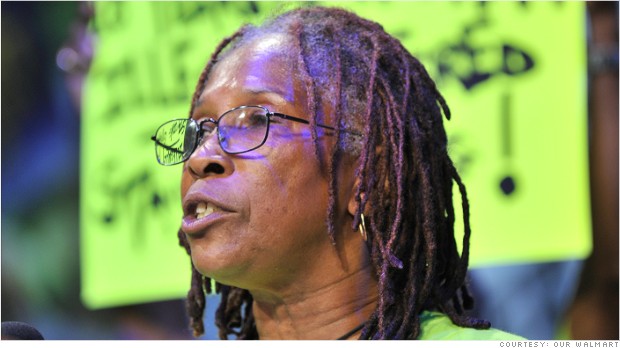With just a few peaks in trading breaking the barrier between gains and losses today, American International Group (NYSE: AIG ) is set to close with a mild loss of 0.13%. The insurer and its investors have a few new variables to consider before the close of the week, and though some are not immediate pressures, it could make a big difference for the company in the long term.
Failure to mediate
Monday kicked off the renewed Article 77 hearing for Bank of America's (NYSE: BAC ) settlement with investors over mortgage-backed securities. Of course, AIG has been the loudest critic of the settlement, citing a similar case that was resolved with insurer MBIA (NYSE: MBI ) that received $0.60 on the dollar, when the current $8.5 billion price tag from B of A is just a fraction of that. Investors may be concerned that the recent refusal of mediation between the parties by B of A signals that the bank firmly believes a decision will be made in its favor -- thus signaling a loss for the insurer. As the hearing moves on, be sure to watch out for new signs that the deal will be approved. Though it may not end up being big enough to suit AIG, some money to recoup losses is better than none.
Hot Media Companies To Watch In Right Now: Gannett Co. Inc. (GCI)
Gannett Co., Inc. operates as a media and marketing solutions company in the United States and internationally. Its Publishing segment publishes 83 U.S. daily newspapers with affiliated online sites, including USA TODAY, a national, general-interest daily newspaper; USATODAY.com; USA WEEKEND, a magazine supplement for newspapers; Clipper Magazine, a direct mail advertising magazine; bi-weekly Nursing Spectrum and NurseWeek periodicals; and military and defense newspapers. This segment also includes 17 paid-for daily newspapers; approximately 200 weekly newspapers, magazines, and trade publications; and approximately 600 non-daily publications, as well as involves in commercial printing, newswire, marketing, and data services operations. The company?s Digital segment owns and operates CareerBuilder, an employment Web site, which offers online recruitment and career advancement services for employers, employees, recruiters, and job seekers; ShopLocal, which provides multicha nnel shopping and advertising services; Planet Discover, which offers hosted search and advertising services; PointRoll, which provides digital marketing services and technology; and Schedule Star, which offers scheduling solution for high school athletic departments. Its Broadcasting segment operates 23 television stations and affiliated Web sites, which produce local programming, such as news, sports, and entertainment programming. This segment also includes Captivate Network, a national news and entertainment network that delivers programming and full-motion video advertising on video screens located in elevators of office towers and select hotel lobbies in North America. The company has strategic business relationships with online affiliates, including Classified Ventures, ShopLocal.com, Topix, and Metromix LLC, as well as strategic marketing agreement with Microsoft. Gannett Co., Inc. was founded in 1906 and is headquartered in McLean, Virginia.
Advisors' Opinion:- [By Seth Jayson]
Gannett (NYSE: GCI ) reported earnings on July 22. Here are the numbers you need to know.
The 10-second takeaway
For the quarter ended June 30 (Q2), Gannett missed estimates on revenues and missed slightly on earnings per share. - [By The Part-time Investor]
The following stocks met the criteria in January of 2008 and were put into the initial portfolio:
Abbot Labs (ABT)Advanced data processing (ADP)Associated Banc-Corp (ASBC)Bank of America (BAC)BB&T Corp. (BBT)Bemis Company (BMS)Anheuser Busch (BUD)The Chubb Corporation (CB)Clorox (CLX)Comerica Inc. (CMA)Diebold Inc. (DBD)Emerson Electronics (EMR)First Dollar Corp. (FDO)First Third BanCorp. (FITB)Gannett Co, Inc. (GCI)General Electric (GE)Hershey (HSY)Illinois Tools Works (ITW)Johnson and Johnson (JNJ)Leggett and Platt (LEG)Eli Lilly (LLY)La-Z-Boy (LZB)McDonald's (MCD)Marsh and Ilsley (MI)M&T Bancorp (MTB)PepsiCo (PEP)Pfizer (PFE)Procter & Gamble (PG)Pentair Ltd. (PNR)Regions Financial Corp. (RF)Rohm and Haas (ROH)RPM International (RPM)Sherwin Williams (SHW)Sysco Corp. (SYY)UDR Inc. (UDR)Historical quotes were taken from Yahoo Finance. $10,000 was put into each position, to the nearest whole share, so a total of $349,262.89 was invested. From 1/15/08 through 5/16/13 all dividends were reinvested back into the stock that paid them. If a dividend cut was announced, that stock was sold on the ex-div date of the new, lower dividend.
- [By Mike Deane]
Early on Monday morning, Gannett (GCI) had its price target raised to $35 from $34 at FBR Capital. The ratings company also affirmed that Gannett is a “Top Pick.”�
Gannett, a publishing and broadcasting company that operates in the U.S. and the U.K., currently has a price of $29.76, and FBR’s new target suggests an 18% upside.
FBR analyst William Bird had the following comments about GCI’s PT raise: “Based on our analysis, we estimate that Gannett’s spectrum is worth approximately $2.2 billion, or $9 per share, roughly doubling in value from the�acquisition�of BLC (i.e., pre-deal valuation of ~$1.1 billion). Separately, we are lowering our 2014 EPS estimate by $0.07 to reflect the previously announced sale of three stations to MDP (note: an expected midyear close means that the stations will not be in operating results from January 1, but the proceeds will not be received until midyear). We are increasing our price target to $35 from $34 to reflect shareholder accretion from the sale. We like Gannett’s improving business mix, growth profile, and ability to drive growth with its own propeller through higher retrans, synergies, and potential TV acquisitions.”
Gannett stock was inactive in pre-market trading. So far this year, the company’s stock is up 0.61%.
- [By Rich Duprey]
Here's something no one ever said: We don't see enough daily sports coverage, so we need a new website dedicated to cover it.�Yet USA Today, the�Gannett� (NYSE: GCI ) newspaper dedicated to giving you national news in bite-size snippets and graphics, is launching a new website dedicated to just that. Calling it "For The Win," it expects the new division to attract fans inside and out of sports.
Hot Media Companies To Watch In Right Now: Charter Communications Inc.(CHTR)
Charter Communications, Inc., through its subsidiaries, provides entertainment, information, and communications solutions to residential and commercial customers in the United States. The company offers cable video programming services, such as basic and digital video, premium channels, OnDemand, pay-per-view, high definition television, digital video recorder, and online video services; Internet services; Charter.net, which provides multiple e-mail addresses, as well as various entertainment, games, news, and sports content; and telephone services. It also provides broadband communications solutions, such as Internet access, data networking, fiber connectivity to cellular towers and office buildings, video entertainment services, and business telephone services under the Charter Business brand name to business and carrier organizations. As of December 31, 2011, the company served approximately 4.1 million video customers; approximately 3.5 million Internet customers; appr oximately 1.7 million telephone customers; and approximately 476,200 commercial primary service units. Charter Communications, Inc. was founded in 1999 and is based in St. Louis, Missouri.
Advisors' Opinion:- [By James E. Brumley]
The cable-television M&A chatter is making its rounds again, this time with Charter Communications, Inc. (NASDAQ:CHTR), Time Warner Cable Inc. (NYSE:TWC), and Comcast Corporation (NASDAQ:CMCSA) pegged as the three points of the ever-changing parties of a never-ending love triangle. The buzz is, well, was that CHTR was first in line to nab TWC. Today, however, it's starting to look like CMCSA is more seriously interested in Time Warner Cable than first thought. TWC shares jumped on the doubly-good news that it may well become the prize in a bidding war between Charter Communications and Comcast Corporation. Meanwhile, CMCSA shares have jumped (albeit not quite as firmly) on the prospect of its ownership of TWC. What's interesting - and perhaps telling - is the fact that not only have CHTR shares not soared in the wake of what would normally be viewed as good news, but Charter shares have actually stumbled heading into the possible bidding war. Might this be an omen of what's actually in store for Charter Communications?
- [By Tim Brugger]
Time Warner Cable (NYSE: TWC ) , Comcast, and Charter Communications (NASDAQ: CHTR ) , have all been on the other side of the Internet subscriber fence. Phone companies such as AT&T�and Verizon began losing customers to these and other cable Internet providers some time ago, largely because of speed and connectivity issues. And now along comes Google Fiber with an alternative that blows the doors off anything Comcast, Time Warner, or Charter can offer, and often for the same or less money. If the cable industry isn't worried, it should be.
- [By James Miller Phd]
The company has a current ratio of 13.05% which is higher than the one registered by Charter Communications Inc. (CHTR), Digital Globe Inc. (DGI), EchoStar Corp (SATS), Gilat Satellite Networks Ltd. (GILT) and Intelsat SA (I).
5 Best Solar Stocks To Watch Right Now: Time Warner Cable Inc(TWC)
Time Warner Cable Inc., together with its subsidiaries, operates as a cable operator in the United States. It offers video, high-speed data, and voice services over its broadband cable systems to residential and commercial customers. The company provides a range of video services, including on-demand, high-definition (HD), and digital video recorder (DVR) services; residential high-speed data services with connection to the Internet; wireless mobile broadband Internet services; and digital phone services to residential customers. It offers video programming tiers and music services; high-speed data, networking, and transport services; and commercial digital phone service to small and medium-sized businesses under the Time Warner Cable Business Class brand. Further, Time Warner Cable Inc. sells advertising to various national, regional, and local customers. As of June 30, 2011, the company served approximately 14.5 million residential and commercial customers in the New Yor k State, the Carolinas, Ohio, southern California, and Texas. Time Warner Cable Inc. is based in New York, New York.
Advisors' Opinion:- [By Evan Niu, CFA]
In comparison, Comcast (NASDAQ: CMCSA ) has 18.3 million broadband subscribers, AT&T (NYSE: T ) has 16.4 million, Time Warner Cable (NYSE: TWC ) boasts 10.9 million, and Verizon (NYSE: VZ ) enjoys 8.8 million subscribers.
- [By WALLSTCHEATSHEET]
Time Warner Cable provides entertainment, voice, and high-speed data services to a growing customer base in the United States. The company’s�shareholders may give incoming Chief Executive Officer Rob Marcus the will to reject a $62 billion offer for the company. The stock has seen a consistent uptrend in the last few years and is currently trading sideways. Over the last four quarters, earnings have been mixed while revenues have been rising which has left investors happy about recent earnings announcements. Relative to its peers and sector, Time Warner Cable has been a relative year-to-date performance leader. Look for Time Warner Cable to OUTPERFORM.
- [By WALLSTCHEATSHEET]
Time Warner Cable provides entertainment, voice, and high-speed data services to a growing customer base in the United States. The company chairman and CEO Rob Marcus has drawn a $160-per-share line in the sand. The stock has been moving higher over the past several years, but is currently trading sideways. Over the last four quarters, earnings have been mixed while revenues have been rising which has produced conflicting feelings among investors. Relative to its peers and sector, Time Warner Cable has been an average year-to-date performer. WAIT AND SEE what Time Warner Cable does this quarter.
Hot Media Companies To Watch In Right Now: Thomson Reuters Corp(TRI)
Thomson Reuters Corporation provides intelligent information for businesses and professionals worldwide. The company allows market participants to connect, access content, and trade in a secure environment through Thomson Reuters Eikon desktop, Thomson Reuters Elektron network, content integration and management technology, content feeds and databases, and transactions infrastructure solutions that support buy- and sell-side customers to trade in foreign exchange, fixed income and derivatives, equities, exchange-traded instruments, and commodities and energy markets. It also offers information, analytics, workflow, and technology solutions to buy-side and off-trading floor customers; access to liquidity in over-the-counter markets, trade execution, and connections for market participants and financial professionals? communities; and a suite of solutions offering informed outcomes to regulated industries and law firms. In addition, the company provides critical information , decision support tools, and software and services to legal, investigation, business, and government professionals; integrated tax compliance and accounting software and services for accounting and law firms, corporations, and government professionals; intellectual property and scientific resources that enable its customers to discover, develop, and deliver innovations; and data analytics, and performance benchmarking solutions and services to healthcare sector. Further, it offers coverage of global, regional, and national news in 20 languages covering politics, business, finance, entertainment, lifestyle, technology, health, science, and sports; and engages in advertising-supported direct-to-consumer publishing activities of Reuters.com and its network of Websites, mobile applications, and electronic out-of-home displays. The company was formerly known as The Thomson Corporation and changed its name to Thomson Reuters Corporation in April 2008. The company is headquartered in New York, New York.
Advisors' Opinion:- [By Monica Wolfe]
Thomson Reuters (TRI)
On Feb. 11, Thomson Reuters declared a dividend of $0.330 per share, representing 3.80% dividend yield for the company. This dividend is payable on March 17 to shareholders of the record at the close of business on Feb. 24, 2014.
- [By Associated Press]
Ron Brown, head of Elektron Analytics, a Thomson Reuters (NYSE: TRI ) unit that sells news feeds that computers can read, said that the words "explosions" or "Obama" alone wouldn't have triggered selling. But add "White House," and it's a combination even the slowest computer couldn't miss.
- [By Jonas Elmerraji]
It's been a solid year for Thompson Reuters (TRI); since the calendar flipped over to January, this $30 billion financial media firm has rallied more than 22%. But don't worry if you've missed out on the move -- TRI looks well-positioned for higher levels thanks to the pattern that's been setting up in shares.
Thompson Reuters is currently forming an ascending triangle pattern, a bullish setup that's formed by horizontal resistance above shares at the $35.50 level and uptrending support to the downside. Basically, as TRI bounces in between those two technically-important price levels, it's getting squeezed closer and closer to a confirmed breakout above that $35.50 price level. When the breakout happens, it's time to be a buyer.
TRI closed above the $35.50 level in yesterday's session, but it's a little early to call it a breakout just yet. If shares can hold above that breakout level all through today's session, then the buy signal is worth heeding.
- [By Bill Smith]
FDS operates in a highly competitive industry, some with more resources. Their competitors include:
Thomson Reuters Corp. (TRI)BloombergInteractive (IDC)MSCI Inc. (MXB)Morningstar Inc. (MORN)Track Data Corp. (TRAC)Edgar Online (EDGR)McGraw-Hill (MHP )
Hot Media Companies To Watch In Right Now: DIRECTV(DTV)
DIRECTV provides digital television entertainment in the United States and Latin America. The company provides direct-to-home (DTH) digital television services, as well as multi-channel video programming distribution services in the United States. It offers various channels of digital-quality video entertainment and CD-quality audio programming directly to subscribers' homes or businesses, as well as video-on-demand services; and approximately 160 national high-definition television channels and 4 3D channels. The company also provides premium professional and collegiate sports programming, such as the NFL SUNDAY TICKET package, which allows subscribers to view the NFL games. In addition, it offers DTH digital television services in Latin America and the Caribbean, including Puerto Rico. The company provides its local and international programming under the DIRECTV and SKY brand names. As of December 31, 2010, it served approximately 19.2 million subscribers in the United States; and 8.9 million subscribers in Latin America. The company was founded in 1990 and is based in El Segundo, California.
Advisors' Opinion:- [By Chris Hill]
Yahoo! (NASDAQ: YHOO ) spent $1.1 billion on social media site Tumblr last week. This week, it is reportedly bidding for Hulu. It is also supposedly competing with DirecTV (NASDAQ: DTV ) and Time Warner Cable (NYSE: TWC ) . Hulu has 4 million subscribers and brought in $695 million in revenue in 2012. What would a Hulu acquisition mean for Yahoo! shareholders? In this installment of MarketFoolery, our analysts discuss the deal.
- [By Doug Ehrman]
DIRECTV (NASDAQ: DTV ) stock surged when the company announced earnings results earlier this week, easily beating analyst estimates and highlighting the importance of sports programming to TV providers in driving revenues and profits. In the earnings call that followed the release, CEO Mike White was cagey about the future of the company's relationship with the NFL that costs about $1 billion per year and is set to expire in 2015. The market reacted well to the news, driving up DIRECTV stock by nearly 7% on the news, and allowing it to reach its highest level in a decade.
- [By GURUFOCUS]
Three holdings have been among the largest positive contributors for both the quarter and the first half. DIRECTV (DTV) advanced 9% over the last three months and has risen 23% YTD. We have owned DTV for over eight years as its value has grown along with its price. CEO Mike White is one of our "all-star" partners. He and his team have grown ARPU (average revenue per user) for the company's 20 million U.S. satellite subscribers even as the industry has matured. Management has also made high-return investments in Latin America where subscribers have grown rapidly, making this geographic segment almost half of our DTV appraisal. Management consistently has returned capital to owners through repurchasing undervalued shares, including $1.4 billion in the second quarter.
- [By WALLSTCHEATSHEET]
DirecTV is a digital television entertainment company that offers satellite services to consumers and companies across the nation. The company is attempting to jointly acquire Hulu in order to expand its offerings and user base. The stock has been trending higher for the last several years and is now trading near all-time high prices. Over the last four quarters, investors in the company have been excited as earnings and revenue figures have been steadily rising. Relative to its peers and sector, DirecTV is a year-to-date performance leader. Look for DirecTV to continue to OUTPERFORM.
Hot Media Companies To Watch In Right Now: News Corporation(NWSA)
News Corporation operates as a diversified media company worldwide. Its Cable Network Programming segment produces and licenses news, business news, sports, general entertainment, and movie programming for distribution through cable television systems and direct broadcast satellite operators primarily in the United States, Latin America, Europe, and Asia. The company?s Filmed Entertainment segment produces and acquires live-action and animated motion pictures for distribution and licensing in entertainment media, as well as produces and licenses television programming worldwide. Its Television segment operates 27 broadcast television stations in the United States. The company?s Direct Broadcast Satellite Television segment distributes programming services via satellite and broadband directly to subscribers in Italy. Its Publishing segment provides newspapers and information services, such as publishing national newspapers in the United Kingdom, approximately 146 newspapers in Australia, and a metropolitan and a national newspaper in the United States; book publishing services, including the publishing of English language books worldwide; and integrated marketing services comprising the publishing of free-standing inserts, which are marketing booklets containing coupons, rebates, and other consumer offers, as well as provides in-store marketing products and services, primarily to consumer packaged goods manufacturers in the United States and Canada. The company also sells advertising, sponsorships, and subscription services on the company?s various digital media properties and outdoor advertising space on various media primarily in Russia and eastern Europe; and provides data systems and professional services that enable teachers to use data to assess student progress and deliver individualized instructions. News Corporation was founded in 1922 and is headquartered in New York, New York.
Advisors' Opinion:- [By John Kell and Lauren Pollock var popups = dojo.query(".socialByline .popC"); ]
News Corp(NWSA) acquired Handpicked Cos., a luxury-shopping website in the U.K., continuing the newspaper publisher’s push into new online tools and resources. Handpicked, which launched its website in 2007, sells home decor, children’s toys and gifts. News Corp said the site’s offerings will be promoted through two of News Corp’s U.K. publications, The Times and The Sunday Times.
Hot Media Companies To Watch In Right Now: Comcast Corporation(CMCSA)
Comcast Corporation, together with its subsidiaries, provides entertainment, information, and communications products and services in the United States and internationally. Its Cable Communications segment provides video, high-speed Internet, and phone services to residential and business customers. As of June 30, 2011, its cable systems served approximately 22.5 million video customers, 17.5 million high-speed Internet customers, and 9.1 million phone customers. The company?s Cable Networks segment operates cable entertainment networks, such as USA Network, Syfy, E!, Bravo, Oxygen, Style, G4, Chiller, Sleuth, and Universal HD; news and information networks, including CNBC, MSNBC, and CNBC World; cable sports networks comprising Golf Channel and VERSUS; regional sports and news networks; international entertainment, and news and information networks, such as CNBC Europe, CNBC Asia, and Universal Networks International portfolio of networks; cable television production oper ations; and digital media properties consisting primarily of brand-aligned Websites and other Websites, such as DailyCandy, Fandango, and iVillage. Its Broadcast Television segment operates the U.S. broadcast networks, NBC and Telemundo; 10 NBC and 15 Telemundo owned local television stations; broadcast television productions; and related digital media properties. The company?s Filmed Entertainment segment operates Universal Pictures, which produces, acquires, markets, and distributes filmed entertainment and stage plays worldwide in various media formats for theatrical, home entertainment, television, and other distribution platforms. Its Theme Parks segment operates Universal Studios Hollywood park and Wet ?n Wild water park, as well as licenses intellectual properties and provides services to third parties that own and operate Universal Studios Japan and Universal Studios Singapore. Comcast Corporation was founded in 1963 and is based in Philadelphia, Pennsylvania.
Advisors' Opinion:- [By Marc Bastow]
Information, entertainment, and cable provider Comcast (CMCSA) raised its quarterly dividend 15.4% to 22.5 cents per share, payable on Apr. 23 to shareholders of record as of Apr. 2.
CMCSA Dividend Yield: 1.67%
Hot Media Companies To Watch In Right Now: DISH Network Corporation(DISH)
DISH Network Corporation, through its subsidiaries, provides direct broadcast satellite (DBS) subscription television services in the United States. It offers programming that includes approximately 280 basic video channels, 60 Sirius satellite radio music channels, 30 premium movie channels, 35 regional and specialty sports channels, 2,800 local channels, 250 Latino and international channels, and 55 channels of pay-per-view content. The company also offers local HD channels in approximately 160 markets and 215 national HD channels; and receiver systems, including a small satellite dish, digital set-top receivers, and remote controls. In addition, it provides DISHOnline.com, which enables DISH Network subscribers to watch 150,000 movies, television shows, clips, and trailers; DISH Remote Access that enables subscribers to remotely manage their DVRs using compatible mobile devices, such as smartphones, tablets, and laptops through their broadband-connected receiver; and Go ogle TV that enables DISH Network subscribers to search the Internet, check email, interact with social media, and find additional online programming content while simultaneously watching television. As of March 31, 2011, the company had approximately 14.191 million customers. DISH Network provides receiver systems and programming through direct sales channels; and independent third parties, such as small satellite retailers, direct marketing groups, local and regional consumer electronics stores, nationwide retailers, and telecommunications companies. The company was founded in 1980 and is headquartered in Englewood, Colorado.
Advisors' Opinion:- [By Chris Hill]
Noodles & Company's (NASDAQ: NDLS ) stock continues to rise. Westport Innovations (NASDAQ: WPRT ) experiences a pullback. Southwest Airlines (NYSE: LUV ) and DISH Network (NASDAQ: DISH ) team up to offer live TV to passengers. And it was a bad day for anyone who thinks Amazon.com (NASDAQ: AMZN ) is overvalued. In this installment of Investor Beat, Jason and Matt discuss four stocks making big moves today.
- [By Alyce Lomax]
Headline drama
Who will acquire Sprint has been making major headlines this week. Japan's SoftBank made a $20.1 billion offer for the wireless company, but DISH Network (NASDAQ: DISH ) made an unsolicited $25.5 billion offer. - [By Ben Levisohn]
Like a spring that launches itself into the air after the pressure is released, the stock market has jumped higher as Vladimir Putin dialed back the tension in Ukraine. Walt Disney (DIS), American Express (AXP), Goldman Sachs (GS), Dish Network (DISH) and Delta Air Lines (DAL) helped lead the markets higher.
Hot Media Companies To Watch In Right Now: Discovery Communications Inc(DISCA)
Discovery Communications, Inc. operates as a non fiction media and entertainment company worldwide. The company provides original and purchased programming across various distribution platforms. Its content covers science, exploration, survival, natural history, sustainability of the environment, technology, docu-series, anthropology, paleontology, history, space, archaeology, health and wellness, engineering, adventure, lifestyles, forensics, civilization, and current events. The company owns and operates nine national television networks in the United States, including Discovery Channel, TLC, Animal Planet, Science Channel, Investigation Discovery, Military Channel, Planet Green, Discovery Fit & Health, and Velocity. Discovery Communications also has interests in Oprah Winfrey Network, a pay-television network and Web site; The Hub that features original programming, game shows, and live-action series and specials; and 3net, a three-dimensional network. In addition, it o ffers network branded Web sites, and mobile and video-on-demand services; and distributes various national and pan-regional television networks. Further, the company develops and sells curriculum-based products and services to public and private K-12 schools, such as access to an online VOD service that includes curriculum-based tools, professional development services, and student assessment and publication of hardcopy curriculum-based content; and postproduction audio services to motion picture studios, independent producers, broadcast networks, cable channels, advertising agencies, and interactive producers. As of December 31, 2011, it operated approximately 150 distribution feeds in 40 languages. The company is headquartered in Silver Spring, Maryland.
Advisors' Opinion:- [By Harold L. Vogel]
*Includes AMC (AMCX), Cablevision (CVC), Charter, Comcast Cable (CMCSA) and networks, Discovery (DISCA), Disney (DIS) cable networks, Time Warner Cable (TWC) and cable networks, Viacom (VIAB) networks.
- [By Patricio Kehoe] d that precise strategy and now owns several cable networks available in over 200 countries worldwide. The national and pan-regional networks, distributed through 130 feeds and in 40 languages, have established this media firm in virtually every market. So, let�� take a look at what might have encouraged investment gurus Ron Baron (Trades, Portfolio) and Lee Ainslie (Trades, Portfolio) to add more of this company�� shares to their portfolio.�
Working Through the Niche
As the niche cable network provider in the media industry, Discovery�� flagship channel addresses topics like science, technology, history and exploration. With TLC, Animal Planet and Discovery as the three key domestic channels, the company reaches 100 million households, and despite the mature U.S. market, sales have grown 6% and revenue 10% in fiscal 2013. This is mainly due to the media giant�� unique content programming and line-up refreshments. Hit shows like Shark Week, for example, have become so popular through advertising that the network experienced in 2013 its all-time best viewership with over 50 million viewing rates during one episode. The men�� lifestyle cable network, Velocity, also experienced a 30% viewership increase in quarter four of 2013, and is now the fastest-growing network in that segment.��
Furthermore, in addition to the namesake channels, Discovery also owns Investigation Discovery, The Learning Channel, a 50% stake in Oprah Winfrey�� new cable channel OWN, and The Hub, a children�� network created with Hasbro Inc. (HAS). The strong universal appeal of content which transcends cultures and languages, add a differential value to this company and has allowed international distribution across multiple media platforms. In fact, 100% content ownership gives this firm a competitive advantage, as it can seek benefits from non-traditional content distribution. With companies like Netflix Inc. (NFLX)�or Amazon.com Inc. (AMZN) looking to push t







 Popular Posts: 10 Potential Short Selling Candidates for 2014AMZN: Amazon Stock Has a Big, Boring Problem3 European Dividend Stocks to Buy Recent Posts: Health Stocks: Are Premium Grocers and Others Worth a Buy? AMZN: Amazon Stock Has a Big, Boring Problem Emerging Markets: Investing Where Others Fear to Tread View All Posts
Popular Posts: 10 Potential Short Selling Candidates for 2014AMZN: Amazon Stock Has a Big, Boring Problem3 European Dividend Stocks to Buy Recent Posts: Health Stocks: Are Premium Grocers and Others Worth a Buy? AMZN: Amazon Stock Has a Big, Boring Problem Emerging Markets: Investing Where Others Fear to Tread View All Posts  Source: Flickr
Source: Flickr  Let’s take a look, starting with premium grocers. I wrote about Whole Foods recently, noting that groceries are a rotten business. The business of selling food and basic staples is brutally competitive and tends to have modest margins. There is one big exception, however: Premium or specialty grocers such as Whole Foods, Trader Joe's or HEB's Central Market.
Let’s take a look, starting with premium grocers. I wrote about Whole Foods recently, noting that groceries are a rotten business. The business of selling food and basic staples is brutally competitive and tends to have modest margins. There is one big exception, however: Premium or specialty grocers such as Whole Foods, Trader Joe's or HEB's Central Market. OK, so organic grocers are best avoided at current prices. But what about health-conscious casual dining?
OK, so organic grocers are best avoided at current prices. But what about health-conscious casual dining? Now that I have you salivating thinking about burritos, what about traditional "health" stocks such as diet products companies Weight Watchers (WTW) and Nutrisystem (NTRI) or vitamin and supplement retailer GNC Holdings (GNC)?
Now that I have you salivating thinking about burritos, what about traditional "health" stocks such as diet products companies Weight Watchers (WTW) and Nutrisystem (NTRI) or vitamin and supplement retailer GNC Holdings (GNC)?














 MORE GURUFOCUS LINKS
MORE GURUFOCUS LINKS  102.03 (1y: +42%) $(function(){var seriesOptions=[],yAxisOptions=[],name='SLB',display='';Highcharts.setOptions({global:{useUTC:true}});var d=new Date();$current_day=d.getDay();if($current_day==5||$current_day==0||$current_day==6){day=4;}else{day=7;} seriesOptions[0]={id:name,animation:false,color:'#4572A7',lineWidth:1,name:name.toUpperCase()+' stock price',threshold:null,data:[[1366693200000,71.94],[1366779600000,73.17],[1366866000000,73.44],[1366952400000,73.34],[1367211600000,74.03],[1367298000000,74.43],[1367384400000,73.79],[1367470800000,74.25],[1367557200000,75.72],[1367816400000,76.16],[1367902800000,76.89],[1367989200000,77.59],[1368075600000,77.25],[1368162000000,76.82],[1368421200000,77.04],[1368507600000,76.86],[1368594000000,75.68],[1368680400000,75.27],[1368766800000,75.74],[1369026000000,77.42],[1369112400000,77.08],[1369198800000,75.58],[1369285200000,75.38],[1369371600000,74.66],[1369717200000,75.4],[1369803600000,74.98],[1369890000000,74.81],[1369976400000,73.03],[1370235600000,73.25],[1370322000000,72.85],[1370408400000,72.18],[1370494800000,73.3],[1370581200000,73.93],[1370840400000,73.3],[1370926800000,71.44],[1371013200000,70.95],[1371099600000,72.46],[1371186000000,71.6],[1371445200000,73.1],[1371531600000,74.16],[1371618000000,73.4],[1371704400000,72.14],[1371790800000,72.83],[1372050000000,71.24],[1372136400000,72.09],[1372222800000,71.81],[1372309200000,71.93],[1372395600000,71.66],[1372654800000,72.78],[1372741200000,72.61],[1372827600000,73.01],[1373000400000,74.09],[1373259600000,74.79],[1373346000000,76.54],[1373432400000,76.18],[1373518800000,76.63],[1373605200000,76.84],[1373864400000,77.02],[1373950800000,76.52],[1374037200000,77.61],[1374123600000,78.48],[1374210000000,82.74],[1374469200000,83.81],[1374555600000,83.57],[1374642000000,82.85],[1374728400000,82.57],[1374814800000,81.91],[1375074000000,81.15],[1375160400000,81.43],[1375246800000,81.33],[1375333200000,83.55],[1375419600000,82.89],[1375678800000,82.89],[1375765200000,82.22],[1375851600000,81.05],[1375938000000,81.23],[1376024400000,80.49],[1376283600000,80.25],[1376370000000,82.22],[1376456400000,82.16],[1376542800000,81.99],[1376629200000,81.92],[1376888400000,80.41],[1376974800000,80.62],[1377061200000,80.05],[1377147600000,82.21],[1377234000000,81.67],[! 1377493200000,81.9],[1377579600000,81.17],[1377666000000,82.68],[1377752400000,81.6],[1377838800000,80.94],[1378184400000,82.42],[1378270800000,82.86],[1378357200000,84.22],[1378443600000,85.14],[1378702800000,86.45],[1378789200000,86.9],[1378875600000,87.05],[1378962000000,86.58],[1379048400000,86.72],[1379307600000,87],[1379394000000,87.74],[1379480400000,88.95],[1379566800000,88.79],[1379653200000,87.44],[1379912400000,87.04],[1379998800000,87.91],[1380085200000,88.57],[1380171600000,88.83],[1380258000000,88.82],[1380517200000,88.36],[1380603600000,89.05],[1380690000000,89.85],[1380776400000,89.44],[1380862800000,90.01],[1381122000000,89.29],[1381208400000,87.95],[1381294800000,87.04],[1381381200000,89.42],[1381467600000,90.02],[1381726800000,91.17],[1381813200000,90.54],[1381899600000,92.18],[1381986000000,91.43],[1382072400000,93.99],[1382331600000,93.48],[1382418000000,94.46],[1382504400000,92.84],[1382590800000,92.85],[1382677200000,92.9],[1382936400000,92.85],[1383022800000,94],[1383109200000,93.88],[1383195600000,93.72],[1383282000000,93],[1383544800000,93.51],[1383631200000,92.39],[1383717600000,93.23],[1383804000000,92.05],[1383890400000,93.79],[1384149600000,93.87],[1384236000000,91.99],[1384322400000,93.08],[1384408800000,93.31],[1384495200000,92.98],[1384754400000,92.02],[1384840800000,91.28],[1384927200000,90.45],[1385013600000,91.01],[1385100000000,92.73],[1385359200000,89.81],[1385445600000,89.46],[1385532000000,87.95],[1385704800000,88.42],[1385964000000,87.6],[1386050400000,87.64],[1386136800000,87.28],[1386223200000,86.87],[1386309600000,88.15],[1386568800000,88.03],[1386655200000,87.01],[1386741600000,86.14],[1386828000000,86.96],[1386914400000,86.37],[1387173600000,87],[1387260000000,85.54],[1387346400000,87.26],[1387432800000,86.47],[1387519200000,87.27],[1387778400000,87.32],[1387864800000,88.31],[1388037600000,89.39],[1388124000000,89.9],[1388383200000,89.17],[1388469600000,90.11],[1388642400000,88.82],[1388728800000,88.35],[1388988000000,88.02],[1389074400000,87.51],[1389160800! 000,86.98! ],[1389247200000,86.48],[1389333600000,88.17],[1389592800000,87.46],[1389679200000,88.87],[1389765600000,88.89],[1389852000000,88.61],[1389938400000,90.21],[1390284000000,91.09],[1390370400000,91.21],[1390456800000,90.26],[1390543200000,88.15],[1390802400000,87.91],[1390888800000,87.76],[1390975200000,87.3],[1391061600000,88.81],[1391148000000,87.57],[1391407200000,86.23],[1391493600000,87.19],[1391580000000,86.16],[1391666400000,88.51],[1391752800000,89.5],[1392012000000,89.04],[1392098400000,90.37],[1392184800000,90.03],[1392271200000,90.26],[1392357600000,90.45],[1392703200000,90.63],[1392789600000,90.48],[1392876000000,91.03],[1392962400000,90.07],[1393221600000,92.72],[1393308000000,92.56],[1393394400000,92.35],[1393826400000,91.26],[1393912800000,92.49],[1393999200000,92.01],[1394085600000,92.75],[1394172000000,92.98],[1394427600000,92.87],[1394514000000,91.95],[1394600400000,91.17],[1394686800000,90.27],[1394773200000,89.09],[1395032400000,89.78],[1395118800000,90.5],[1395205200000,90.36],[1395291600000,91.11],[1395378000000,92.67],[1395637200000,93.23],[1395723600000,95.56],[1395810000000,95.43],[1395896400000,96.49],[1395982800000,97.57],[1396328400000,97.96],[1396414800000,97.69],[1396501200000,98.07],[1396587600000,98.03],[1396846800000,97.6],[1396933200000,98.44],[1397019600000,99.02],[1397106000000,97.32],[1397192400000,97.1],[1397451600000,98.48],[1397538000000,100.11],[1397624400000,100.94],[1397710800000,99.91],[1398056400000,101.8],[1398201057000,102.03],[13982
102.03 (1y: +42%) $(function(){var seriesOptions=[],yAxisOptions=[],name='SLB',display='';Highcharts.setOptions({global:{useUTC:true}});var d=new Date();$current_day=d.getDay();if($current_day==5||$current_day==0||$current_day==6){day=4;}else{day=7;} seriesOptions[0]={id:name,animation:false,color:'#4572A7',lineWidth:1,name:name.toUpperCase()+' stock price',threshold:null,data:[[1366693200000,71.94],[1366779600000,73.17],[1366866000000,73.44],[1366952400000,73.34],[1367211600000,74.03],[1367298000000,74.43],[1367384400000,73.79],[1367470800000,74.25],[1367557200000,75.72],[1367816400000,76.16],[1367902800000,76.89],[1367989200000,77.59],[1368075600000,77.25],[1368162000000,76.82],[1368421200000,77.04],[1368507600000,76.86],[1368594000000,75.68],[1368680400000,75.27],[1368766800000,75.74],[1369026000000,77.42],[1369112400000,77.08],[1369198800000,75.58],[1369285200000,75.38],[1369371600000,74.66],[1369717200000,75.4],[1369803600000,74.98],[1369890000000,74.81],[1369976400000,73.03],[1370235600000,73.25],[1370322000000,72.85],[1370408400000,72.18],[1370494800000,73.3],[1370581200000,73.93],[1370840400000,73.3],[1370926800000,71.44],[1371013200000,70.95],[1371099600000,72.46],[1371186000000,71.6],[1371445200000,73.1],[1371531600000,74.16],[1371618000000,73.4],[1371704400000,72.14],[1371790800000,72.83],[1372050000000,71.24],[1372136400000,72.09],[1372222800000,71.81],[1372309200000,71.93],[1372395600000,71.66],[1372654800000,72.78],[1372741200000,72.61],[1372827600000,73.01],[1373000400000,74.09],[1373259600000,74.79],[1373346000000,76.54],[1373432400000,76.18],[1373518800000,76.63],[1373605200000,76.84],[1373864400000,77.02],[1373950800000,76.52],[1374037200000,77.61],[1374123600000,78.48],[1374210000000,82.74],[1374469200000,83.81],[1374555600000,83.57],[1374642000000,82.85],[1374728400000,82.57],[1374814800000,81.91],[1375074000000,81.15],[1375160400000,81.43],[1375246800000,81.33],[1375333200000,83.55],[1375419600000,82.89],[1375678800000,82.89],[1375765200000,82.22],[1375851600000,81.05],[1375938000000,81.23],[1376024400000,80.49],[1376283600000,80.25],[1376370000000,82.22],[1376456400000,82.16],[1376542800000,81.99],[1376629200000,81.92],[1376888400000,80.41],[1376974800000,80.62],[1377061200000,80.05],[1377147600000,82.21],[1377234000000,81.67],[! 1377493200000,81.9],[1377579600000,81.17],[1377666000000,82.68],[1377752400000,81.6],[1377838800000,80.94],[1378184400000,82.42],[1378270800000,82.86],[1378357200000,84.22],[1378443600000,85.14],[1378702800000,86.45],[1378789200000,86.9],[1378875600000,87.05],[1378962000000,86.58],[1379048400000,86.72],[1379307600000,87],[1379394000000,87.74],[1379480400000,88.95],[1379566800000,88.79],[1379653200000,87.44],[1379912400000,87.04],[1379998800000,87.91],[1380085200000,88.57],[1380171600000,88.83],[1380258000000,88.82],[1380517200000,88.36],[1380603600000,89.05],[1380690000000,89.85],[1380776400000,89.44],[1380862800000,90.01],[1381122000000,89.29],[1381208400000,87.95],[1381294800000,87.04],[1381381200000,89.42],[1381467600000,90.02],[1381726800000,91.17],[1381813200000,90.54],[1381899600000,92.18],[1381986000000,91.43],[1382072400000,93.99],[1382331600000,93.48],[1382418000000,94.46],[1382504400000,92.84],[1382590800000,92.85],[1382677200000,92.9],[1382936400000,92.85],[1383022800000,94],[1383109200000,93.88],[1383195600000,93.72],[1383282000000,93],[1383544800000,93.51],[1383631200000,92.39],[1383717600000,93.23],[1383804000000,92.05],[1383890400000,93.79],[1384149600000,93.87],[1384236000000,91.99],[1384322400000,93.08],[1384408800000,93.31],[1384495200000,92.98],[1384754400000,92.02],[1384840800000,91.28],[1384927200000,90.45],[1385013600000,91.01],[1385100000000,92.73],[1385359200000,89.81],[1385445600000,89.46],[1385532000000,87.95],[1385704800000,88.42],[1385964000000,87.6],[1386050400000,87.64],[1386136800000,87.28],[1386223200000,86.87],[1386309600000,88.15],[1386568800000,88.03],[1386655200000,87.01],[1386741600000,86.14],[1386828000000,86.96],[1386914400000,86.37],[1387173600000,87],[1387260000000,85.54],[1387346400000,87.26],[1387432800000,86.47],[1387519200000,87.27],[1387778400000,87.32],[1387864800000,88.31],[1388037600000,89.39],[1388124000000,89.9],[1388383200000,89.17],[1388469600000,90.11],[1388642400000,88.82],[1388728800000,88.35],[1388988000000,88.02],[1389074400000,87.51],[1389160800! 000,86.98! ],[1389247200000,86.48],[1389333600000,88.17],[1389592800000,87.46],[1389679200000,88.87],[1389765600000,88.89],[1389852000000,88.61],[1389938400000,90.21],[1390284000000,91.09],[1390370400000,91.21],[1390456800000,90.26],[1390543200000,88.15],[1390802400000,87.91],[1390888800000,87.76],[1390975200000,87.3],[1391061600000,88.81],[1391148000000,87.57],[1391407200000,86.23],[1391493600000,87.19],[1391580000000,86.16],[1391666400000,88.51],[1391752800000,89.5],[1392012000000,89.04],[1392098400000,90.37],[1392184800000,90.03],[1392271200000,90.26],[1392357600000,90.45],[1392703200000,90.63],[1392789600000,90.48],[1392876000000,91.03],[1392962400000,90.07],[1393221600000,92.72],[1393308000000,92.56],[1393394400000,92.35],[1393826400000,91.26],[1393912800000,92.49],[1393999200000,92.01],[1394085600000,92.75],[1394172000000,92.98],[1394427600000,92.87],[1394514000000,91.95],[1394600400000,91.17],[1394686800000,90.27],[1394773200000,89.09],[1395032400000,89.78],[1395118800000,90.5],[1395205200000,90.36],[1395291600000,91.11],[1395378000000,92.67],[1395637200000,93.23],[1395723600000,95.56],[1395810000000,95.43],[1395896400000,96.49],[1395982800000,97.57],[1396328400000,97.96],[1396414800000,97.69],[1396501200000,98.07],[1396587600000,98.03],[1396846800000,97.6],[1396933200000,98.44],[1397019600000,99.02],[1397106000000,97.32],[1397192400000,97.1],[1397451600000,98.48],[1397538000000,100.11],[1397624400000,100.94],[1397710800000,99.91],[1398056400000,101.8],[1398201057000,102.03],[13982

 One of the most powerful guns you can buy
One of the most powerful guns you can buy 
.JPG)
.JPG)

 &nb! sp; Wal-Mart workers protest on Black Friday
&nb! sp; Wal-Mart workers protest on Black Friday